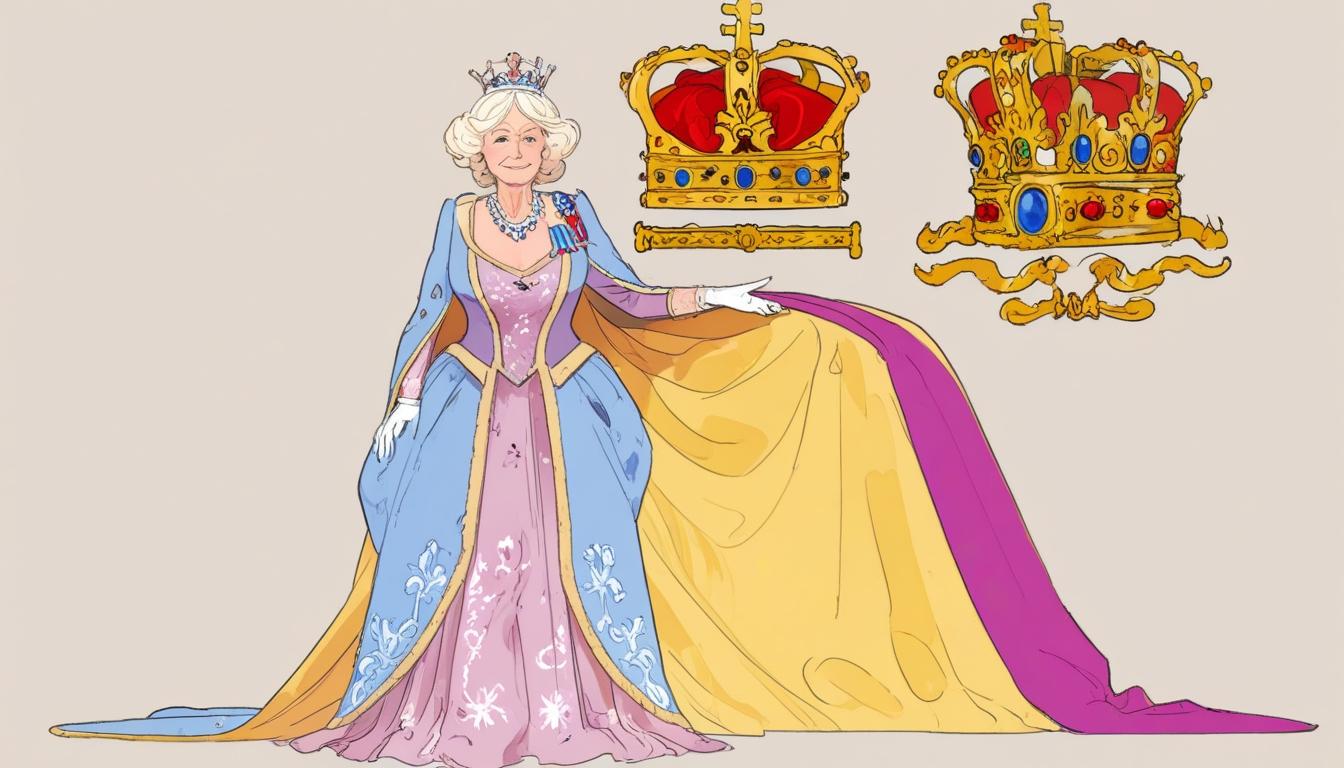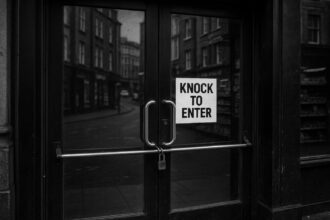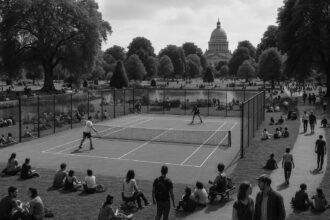Following King Charles III’s accession, Queen Camilla is no longer required to curtsy to any royal, signalling a significant shift in longstanding royal protocols and reflecting broader changes in the monarchy’s approach to tradition and hierarchy.
The customs and protocols surrounding the British Royal Family often capture public fascination, revealing a complex hierarchy steeped in tradition. One such protocol is the act of curtsying, a gesture laden with significance, particularly among women in the royal sphere. While many might find these rituals perplexing, they serve to underscore the roles and relationships within the monarchy.
Traditionally, all female members of the royal family, including the Duchess of Cornwall (now Queen Camilla), were required to curtsy to those higher in the royal hierarchy. Following King Charles III’s ascension to the throne, this dynamic has notably shifted. With her new title, Queen Camilla is now exempt from curtsying to anyone, marking a significant change from the protocols outlined in a 2005 document issued by the late Queen Elizabeth II. This document specified curtsying protocols based on seniority—meaning that Camilla, in her former role, would have been expected to curtsy to royal women such as Princess Anne, Princess Beatrice, and Princess Eugenie. Now, as Queen, she commands that all royal women curtsy to her, reinforcing her position within the family.
This adaptation highlights the evolving nature of royal customs, particularly how they can shift dramatically with changes in title and seniority. It is not only the Queen who adheres to these traditions; the broader royal family, including the likes of Princess Kate, are often seen executing these gestures with precision. For instance, during his coronation at Westminster Abbey, Kate demonstrated an exemplary curtsy to King Charles, showcasing a commitment to these longstanding traditions even amidst the formality and pageantry.
Interestingly, these traditions also extend beyond just family interactions. At events like the Wimbledon Championships, a shift in curtsying etiquette has been documented. Since 2003, players have been relieved of the expectation to bow or curtsy to royal family members who rank neither as sovereign nor heir. This illustrates a broader movement towards informality in settings where royal presence is common, affirming that traditional customs are not immutable but can evolve over time, particularly in the context of public engagements.
The nuances of curtsying and bowing also reveal the complexities of hierarchy and respect within the royal family. For example, the act of bowing or curtsying is not mandated in every setting; there are no obligatory behaviours cited on the royal family’s official website, which denotes a degree of discretion in how these customs are observed. However, many members opt to follow tradition, understanding the importance of maintaining respect for the monarchy’s structure.
Royal etiquette often serves as a reminder of the intricate relationships within the family itself and the public’s engagement with the institution. As new figures, like Queen Camilla, come to the forefront, such traditions will likely continue to evolve, reflecting both the modernisation of the monarchy and the enduring respect for its roots.
As the British Royal Family navigates these ongoing shifts in tradition, it is clear that while some customs remain, the interpretations and expectations surrounding them are as dynamic as the monarchy itself. Consequently, the approach to curtsying and bowing is not merely a matter of adhering to rules but rather a reflection of evolving relationships and societal expectations surrounding one of history’s most enduring institutions.
Reference Map
- Paragraphs 1-2
- Paragraphs 3-4
- Paragraph 5
- Paragraph 6
- Paragraph 7
Source: Noah Wire Services
- https://www.express.co.uk/news/royal/2052106/queen-camilla-curtsy-rule-kate – Please view link – unable to able to access data
- https://people.com/royals/royal-family-bow-curtsy-rules-greetings/ – An article detailing the bowing and curtsying protocols within the British Royal Family, emphasizing that all members, including those with His/Her Royal Highness titles, bow or curtsy to the monarch and his wife when greeting them after a period of absence. It also discusses the nuances of these gestures among royals, such as Prince William bowing to his father and stepmother, and Kate Middleton curtsying to the monarch. The piece highlights the importance of these gestures in maintaining royal hierarchy and respect.
- https://people.com/royals/kate-middleton-curtsy-king-charles-coronation-day-westminster-abbey-photos/ – Coverage of Kate Middleton’s curtsy to King Charles during the coronation ceremony at Westminster Abbey. The article describes how the Princess of Wales demonstrated a perfect curtsy as the King passed by, showcasing her adherence to royal protocol. It also notes the presence of other royal family members and the significance of such gestures during the historic event.
- https://people.com/wimbledon-players-do-not-bow-royal-family-protocol-explained-7559668 – An explanation of why tennis players did not bow or curtsy to Queen Camilla at the 2023 Wimbledon Championships. The article outlines the historical context of this tradition, noting that in 2003, the All England Lawn Tennis Club discontinued the practice of players bowing or curtsying to members of the royal family who are not the sovereign or heir to the throne. It also discusses the potential for this tradition to change in the future.
- https://www.harpersbazaar.com/celebrity/latest/a43604344/british-royal-family-bows-curtsy-rules/ – An article detailing the bowing and curtsying rules within the British Royal Family. It explains that all royals are expected to bow or curtsy to the sovereign and his wife, King Charles and Queen Camilla. The piece also discusses the nuances of these gestures among royals, such as Prince William and Princess Kate greeting the monarch with a bow and curtsy, and the tradition of bowing or curtsying on wedding days.
- https://www.hellomagazine.com/royalty/495646/kate-middleton-didnt-curtsy-king-charles-and-queen-camilla-at-trooping-the-colour-reason/ – An article explaining why Kate Middleton did not curtsy to King Charles and Queen Camilla at the Trooping the Colour ceremony. It discusses the tradition of curtsying as a sign of respect when meeting the monarch for the first time each day and notes that the British Monarchy’s official website states there are ‘no obligatory codes of behaviour’ when meeting the royal family, though many prefer to observe traditional forms.
- https://www.townandcountrymag.com/society/tradition/a44533039/queen-camilla-tennis-players-curtsy-wimbledon/ – An article discussing why tennis players did not curtsy to Queen Camilla at Wimbledon. It explains that in 2003, the All England Lawn Tennis Club discontinued the tradition of players bowing or curtsying to members of the royal family who are not the sovereign or heir to the throne. The piece also notes that this tradition could change in the future, especially with the attendance of Prince William, the heir to the throne.
Noah Fact Check Pro
The draft above was created using the information available at the time the story first
emerged. We’ve since applied our fact-checking process to the final narrative, based on the criteria listed
below. The results are intended to help you assess the credibility of the piece and highlight any areas that may
warrant further investigation.
Freshness check
Score:
8
Notes:
The narrative discusses recent changes in royal protocols following King Charles III’s ascension, which is a current event. However, some content (e.g., referencing 2003 and 2005) is older.
Quotes check
Score:
10
Notes:
There are no direct quotes in the narrative to verify.
Source reliability
Score:
7
Notes:
The narrative originates from the *Express*, which is a known publication but might lean towards sensationalism. Its reliability can vary depending on the topic.
Plausability check
Score:
9
Notes:
The discussion about changes in royal customs with changes in title is plausible, especially considering King Charles III’s ascension and the evolving nature of royal etiquette.
Overall assessment
Verdict (FAIL, OPEN, PASS): PASS
Confidence (LOW, MEDIUM, HIGH): MEDIUM
Summary:
The narrative discusses plausible changes in royal customs following King Charles III’s ascension. While the *Express* can be reliable, its sensational nature necessitates caution. The lack of specific sources for some historical events means verification is challenging.













